Advanced Google Trends
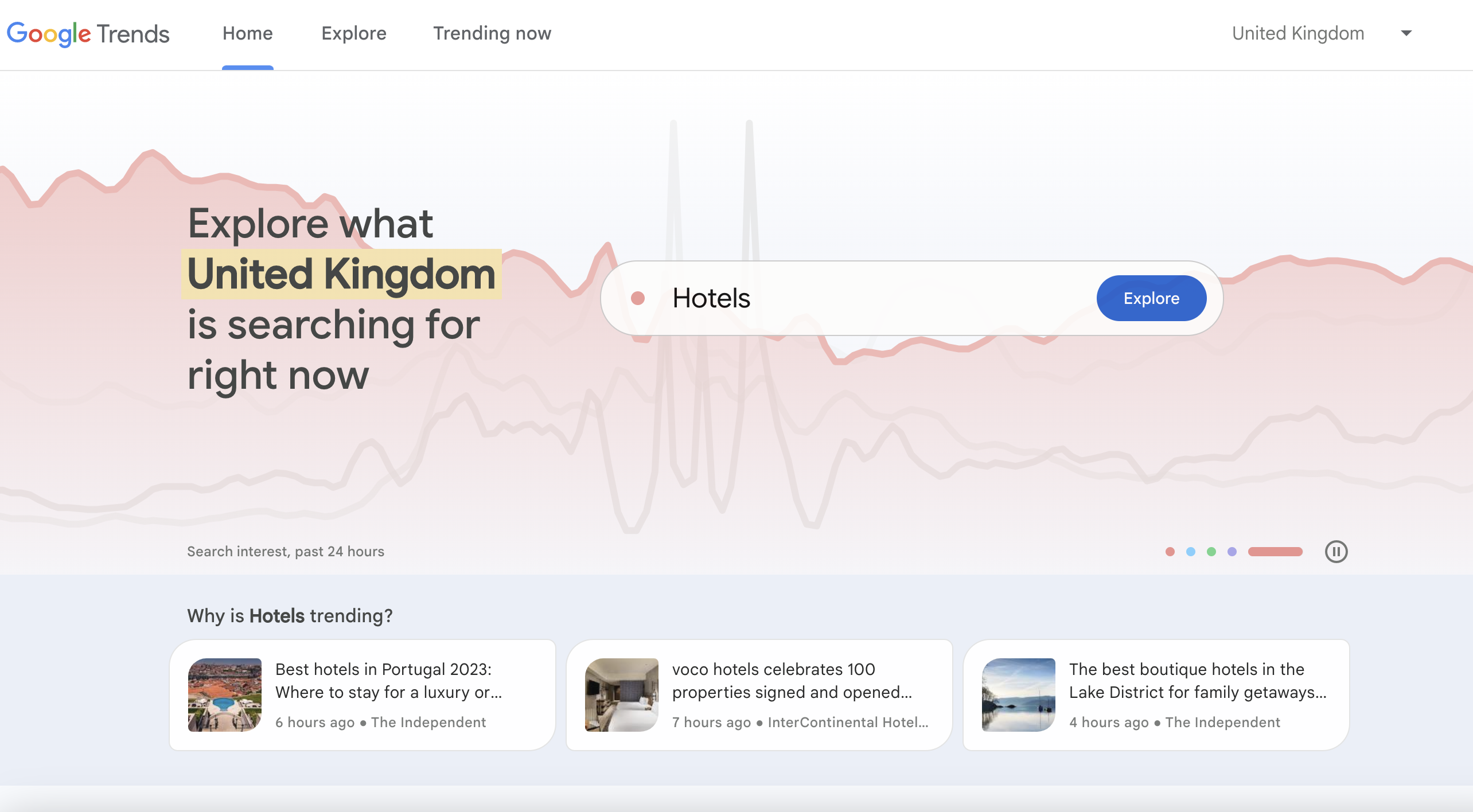
Become a master of the Trends Explore tool with these simple tips for extracting precise data.

Lesson Overview
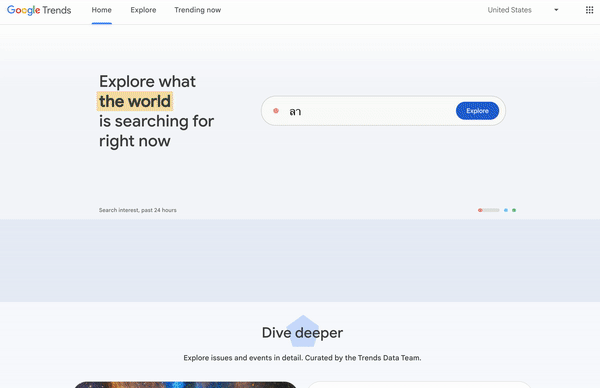
Get precise data from Google Trends
Looking to become a Google Trends expert? This lesson will demonstrate some tips and tricks to get more precise and compelling results from Trends Explore. Before you begin, make sure you understand everything in our beginners’ lesson, Basics of Google Trends.
- Advanced search with punctuation
- Customizable time range and location
- Use categories to consider search context
- Additional context with search type
- Detailed comparison with filters

Advanced search with punctuation
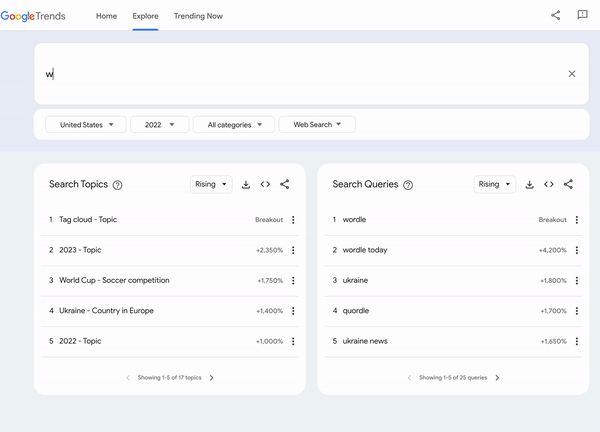
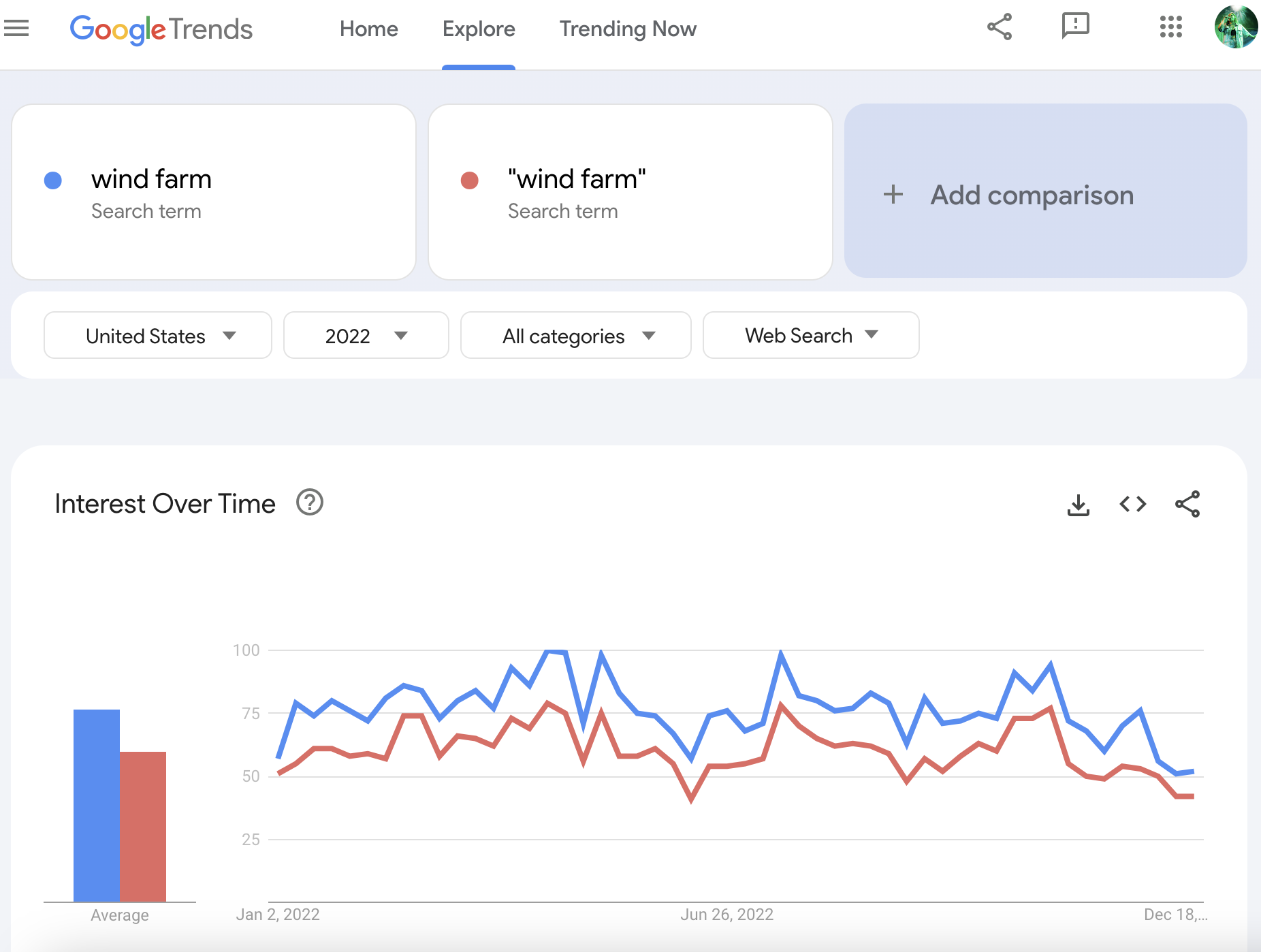
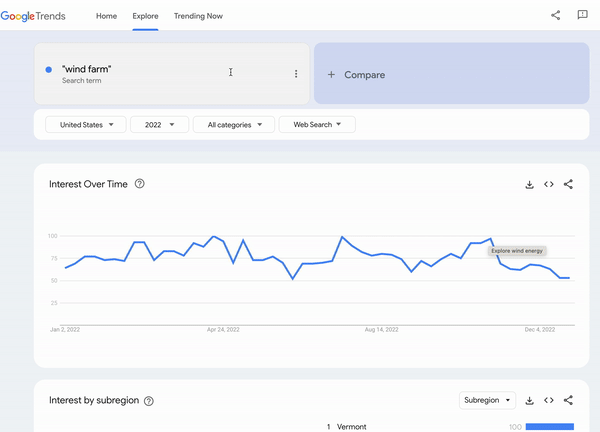
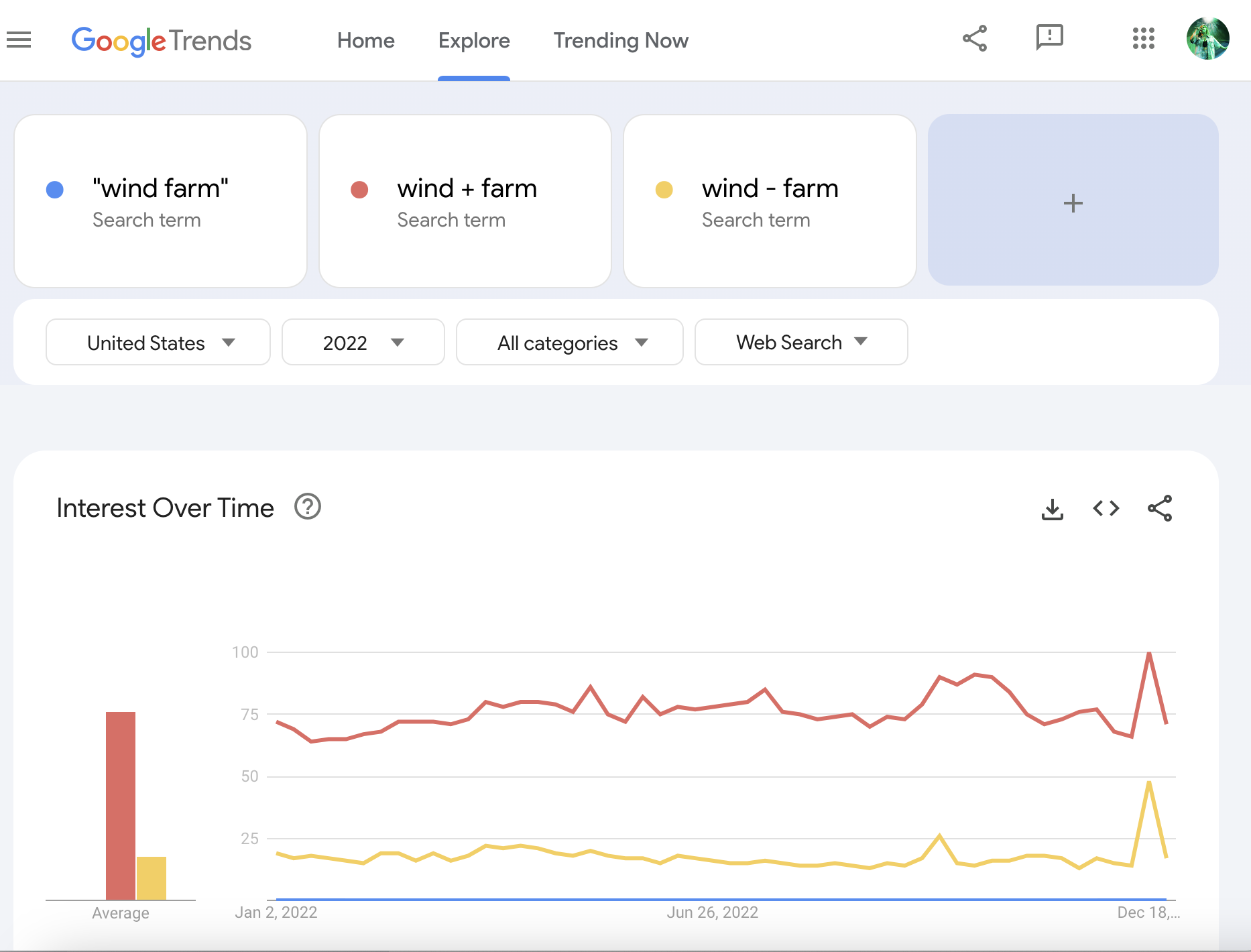
In Basics of Google Trends, we learned that it’s usually best to search for topics, rather than terms. These are language agnostic and include misspellings.
If you can’t find the right topic for your search, you can use punctuation to filter your search.
If you search the term “wind farm”, with no punctuation, your results will contain both words in any order. No misspellings, variations, or plural versions will be included. We can alter this using quotation marks, plus signs, or minus signs.
Searching for “wind farm” in quotation marks shows you Trends results for this exact term, possibly with words before and after.
If you search wind + solar, results can include the words wind OR solar.
If you search wind - farm, results will include the word wind, but exclude the word farm.




Customizable time range and location
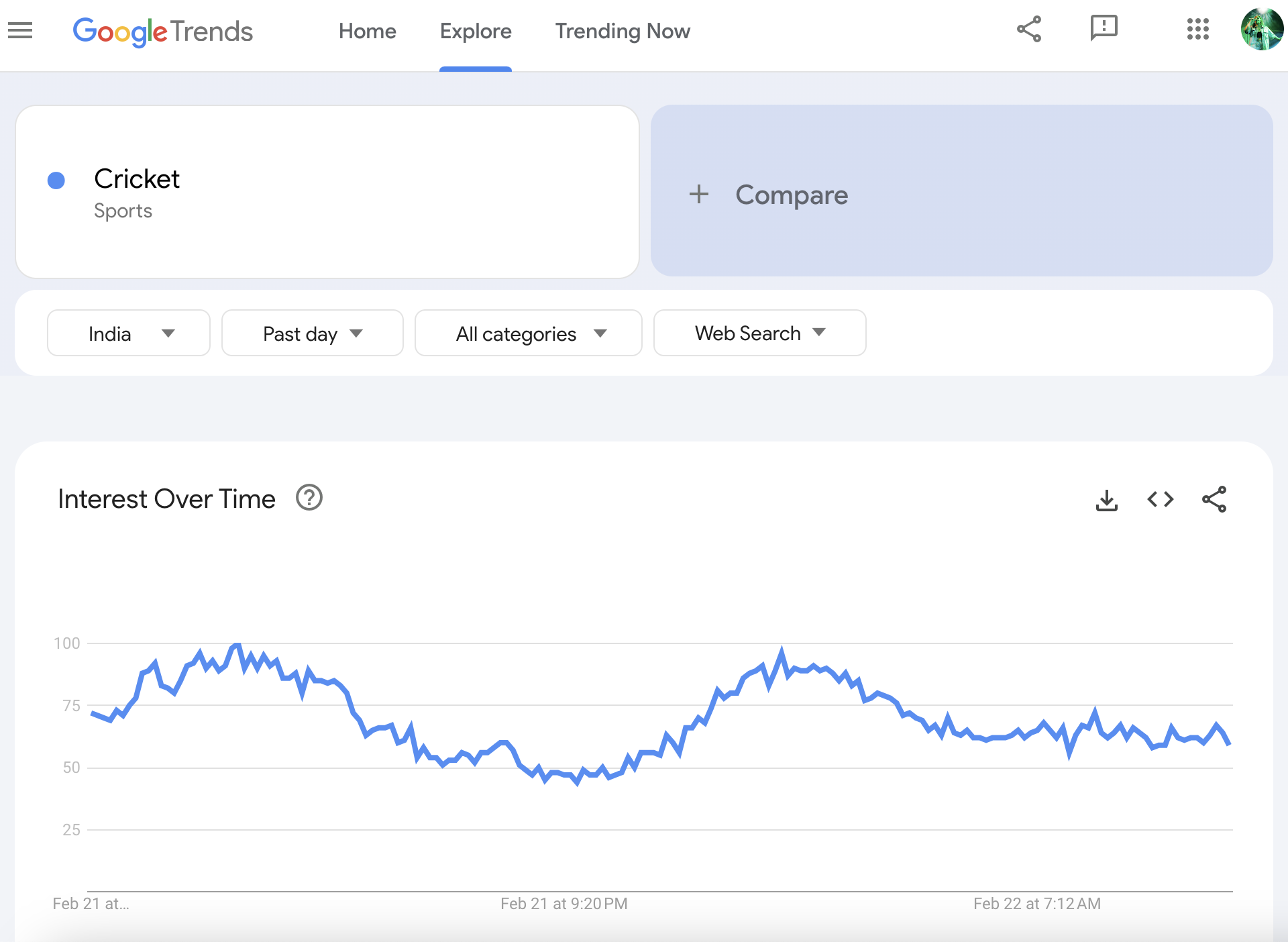
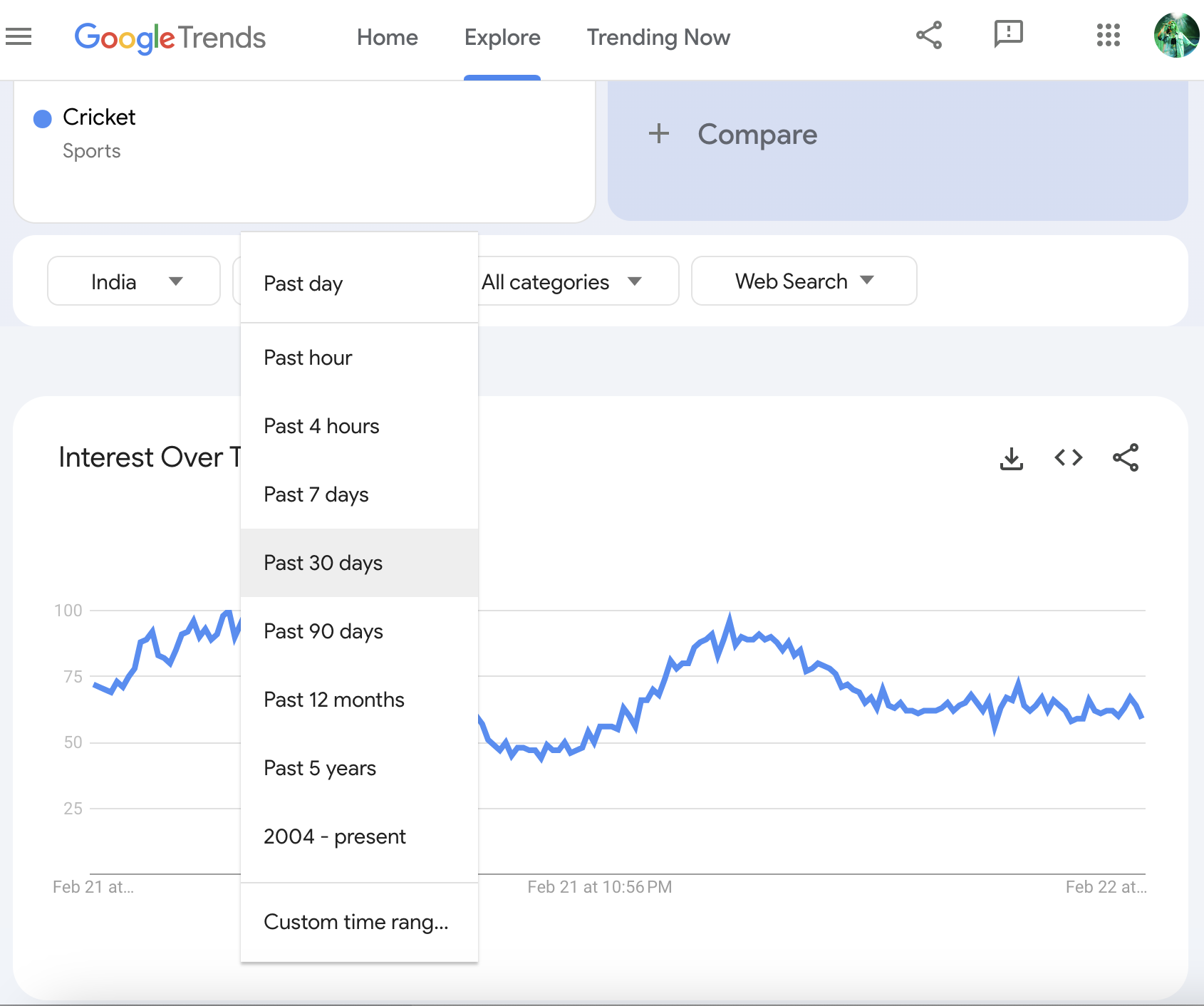
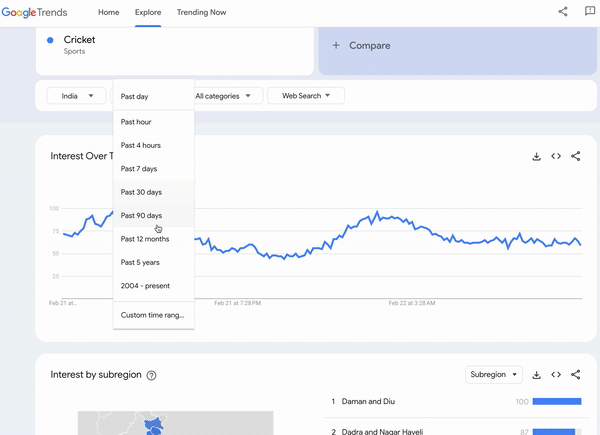
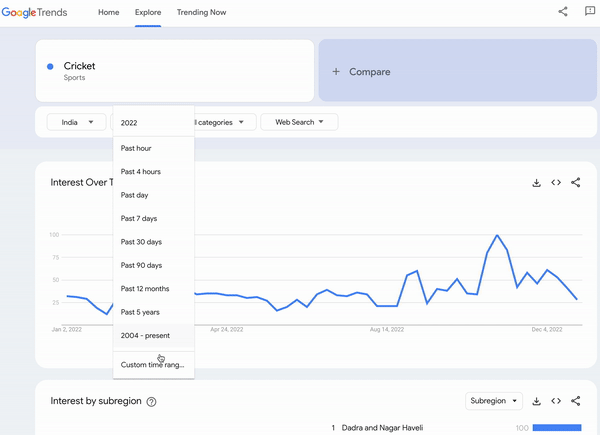
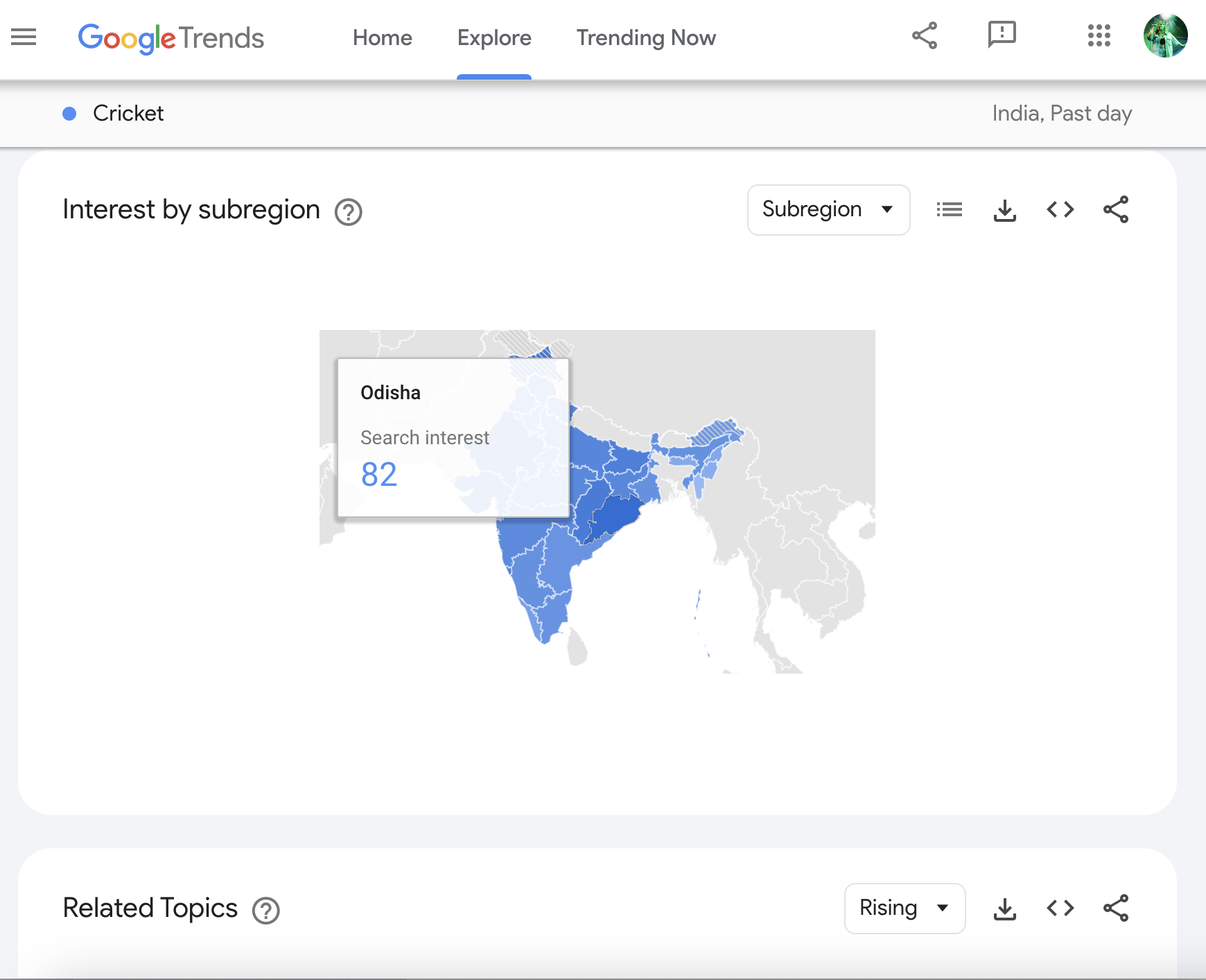

In this section, you will consolidate your knowledge of how to select a time range and location for Google Trends data. This includes options to select a custom time range, or a smaller region for your data.
Google Trends offers a menu of time ranges for your search, from the past hour, all the way back to 2004. You also have the option to use a custom time range, to be even more specific. This example looks at search interest in cricket in India.
Trends Explore will automatically show you data from the past day. Above the time series graph, click the button that says “Past day”. A drop-down list of possible time ranges will appear. Click “custom time range” to see options to select an alternative time range.
The custom time range menu appears as a pop-up. To explore data for a full calendar year, select “full year”. Then, scroll through the list of years, dating back to 2004, to select your preferred time range.
You can also choose to examine a more specific time period. You may either type dates into the text fields, or select these from a calendar view. This is particularly useful for getting granular data for a short period of time.
We have already explored data from different countries in “Basics of Google Trends”. You can browse a list of locations by clicking the country label above the time series graph. Scroll through the list to pick a country, or select “worldwide” for all data.
Hover over a region to see indexed search interest. Click to see sub-regions nested within it, or type the name of a sub-region in the country tab at the top of the page. For example, we can look at search interest in cricket in Tamil Nadu. You can also access search data by metro area, for countries where this is available.






Use categories to consider search context
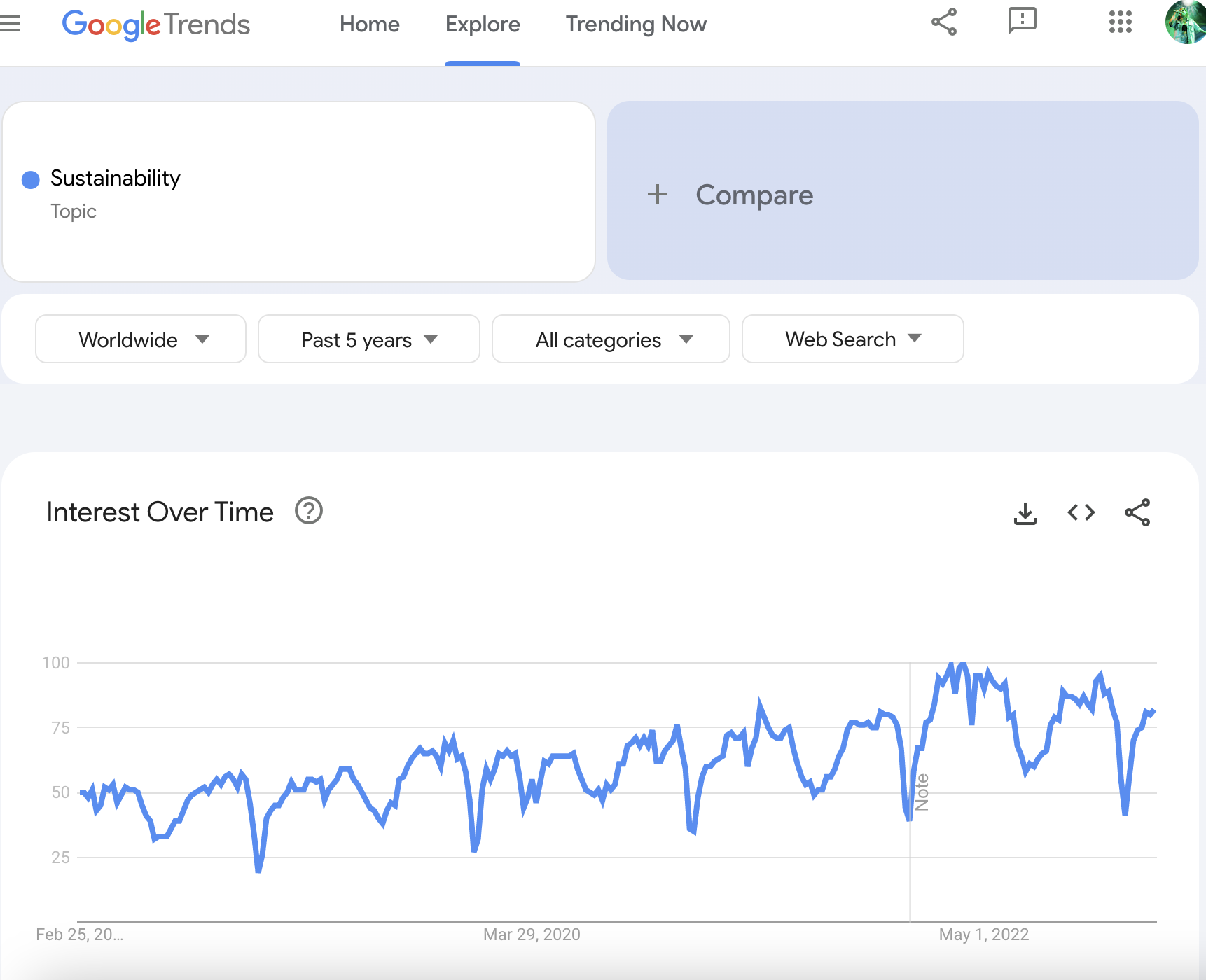
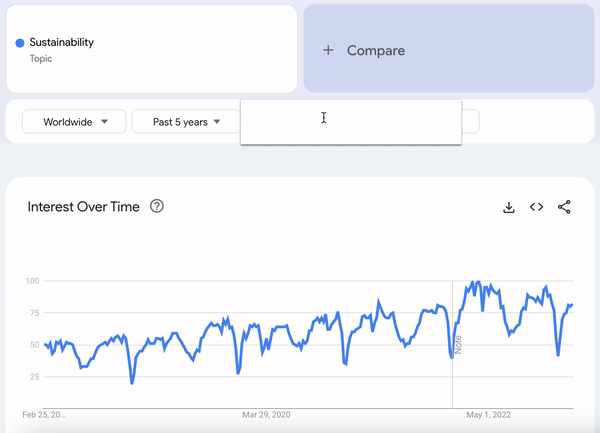
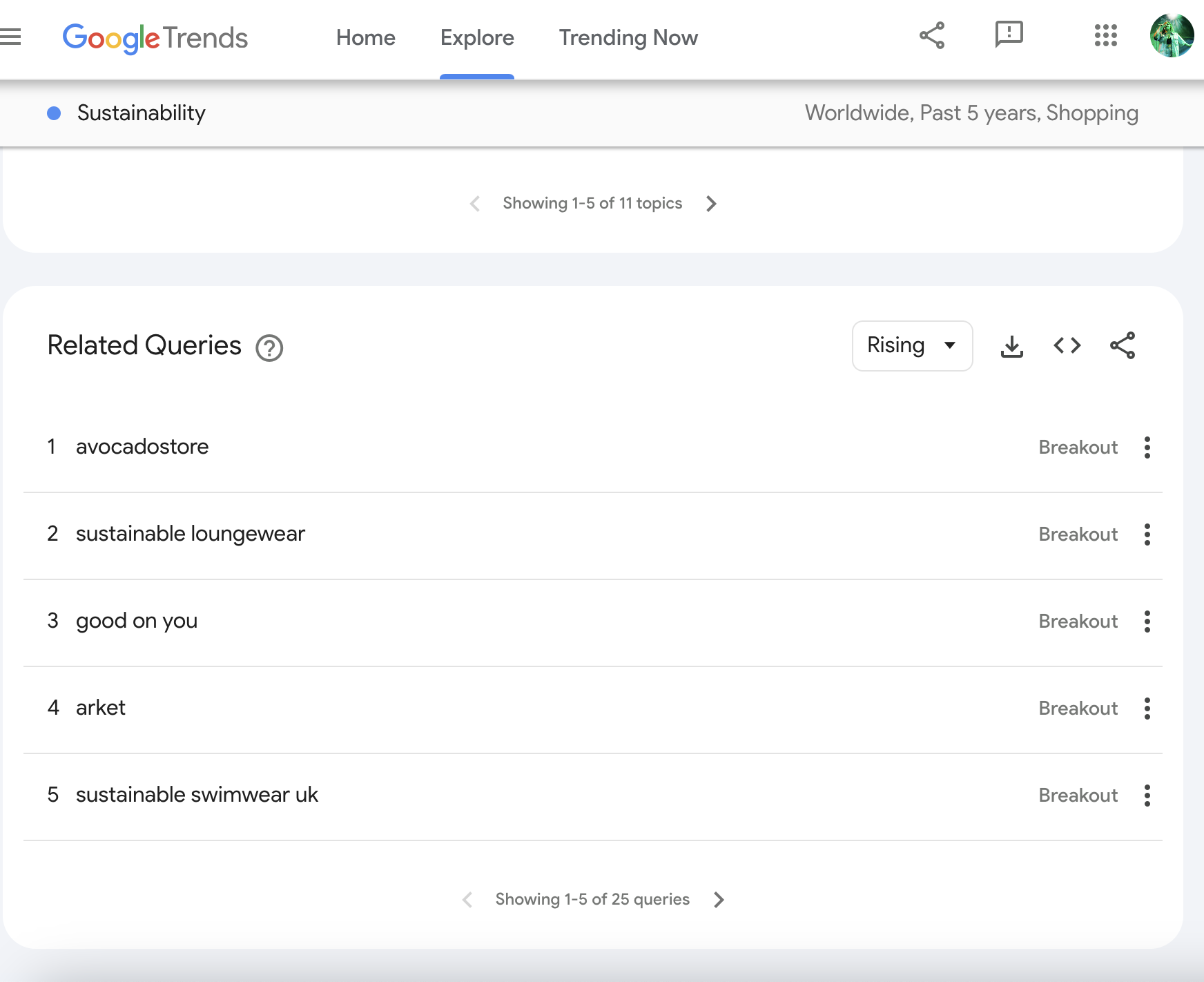
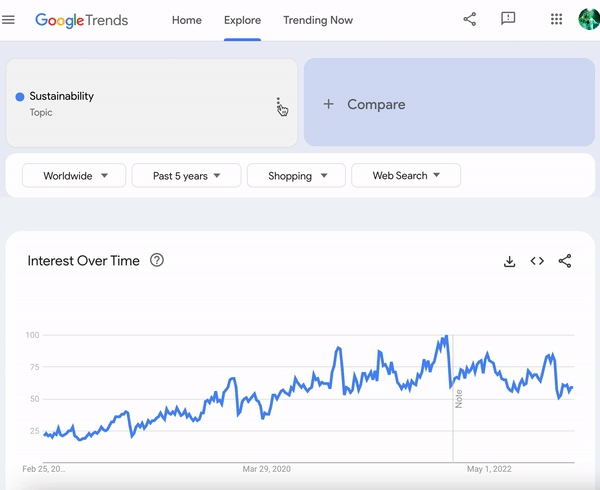
When using Google Trends to explore a topic that is relevant to multiple contexts, you can filter your results by search category to get the most relevant data. This step will walk you through how to find and use categories in Trends Explore.
This example will look at searches for sustainability, in the past five years worldwide. There are different contexts for how people might search for sustainability. Using categories will allow us to explore one particular context.
Above the time series graph, there is a drop-down menu labeled "All categories." Click on the arrow to view a list of categories. You can type in a category name, or click through the parent categories to explore the full list.
Select a category most closely related to the context you are interested in. The results will reflect searches for the term or topic in context.In this case, we will view results for sustainability in the shopping category. This could give us information about how people search for ethical brands, for example.
Once you have selected a category, it’s also possible to remove your search term or topic and look at this broad, categorized data. Think of these categories as umbrella topics. On their own, they are much broader than the search topics we would normally use to explore Google Trends. Combined with these topics, we can find much more specific insights.




Additional context with search type
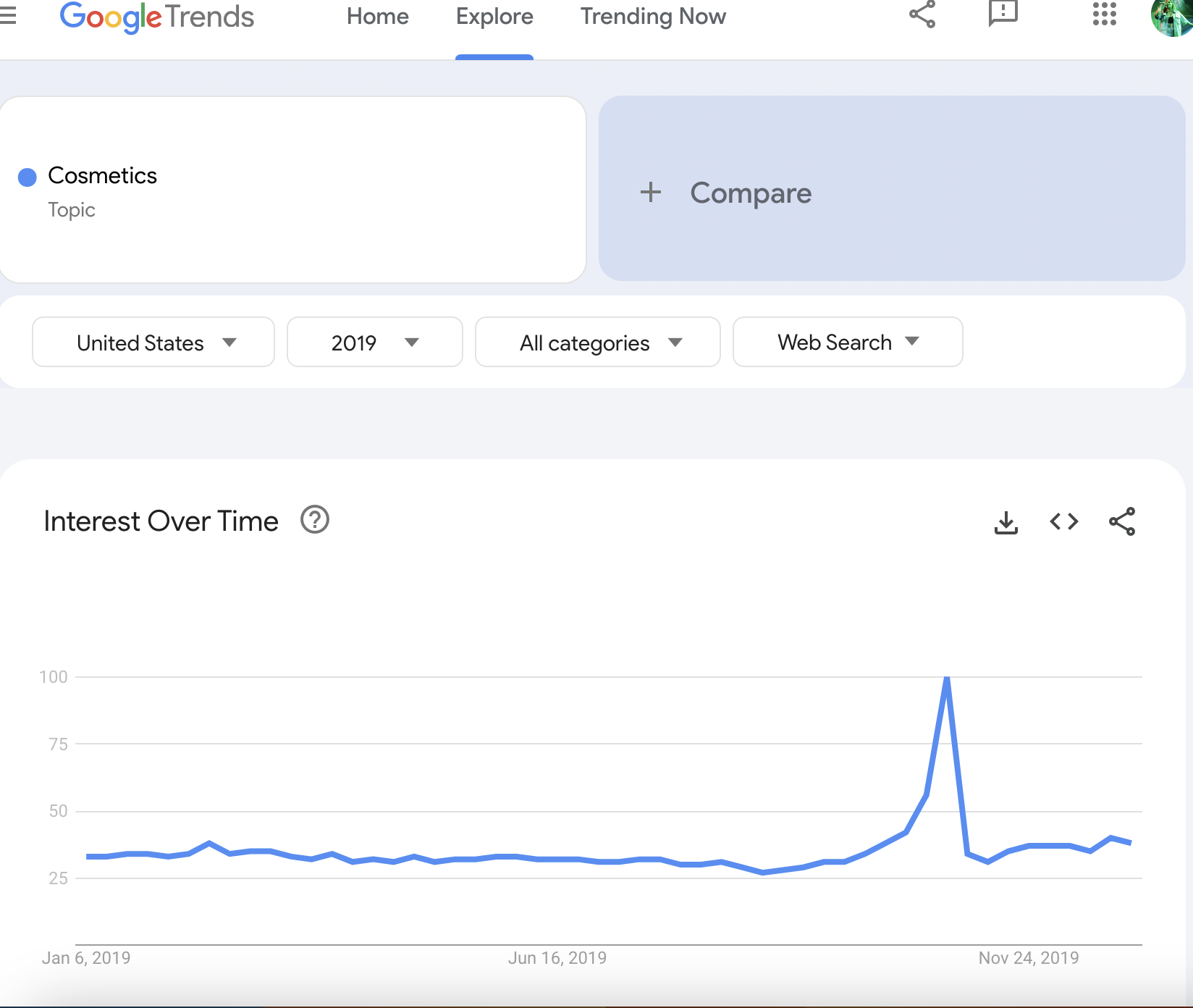
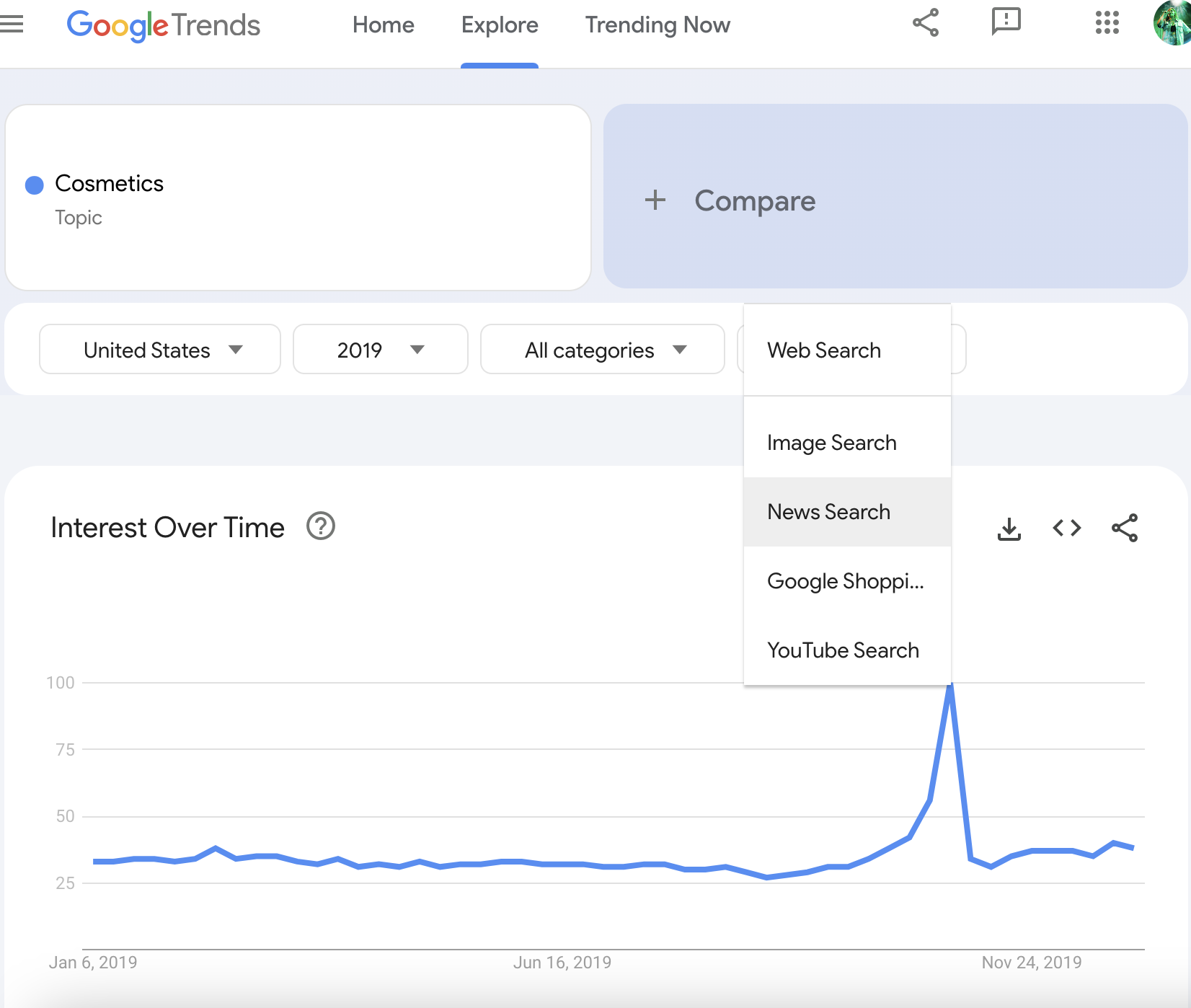
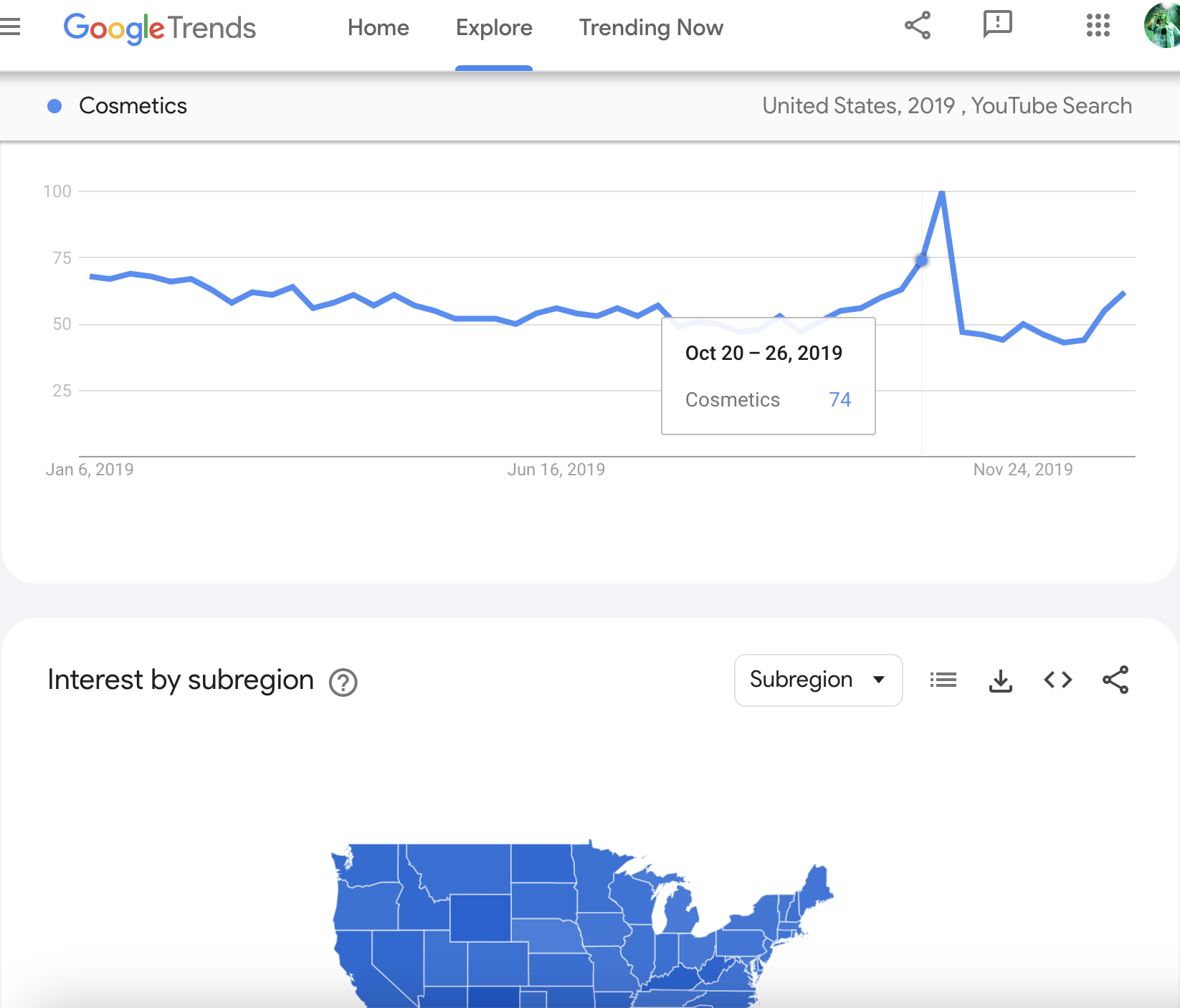
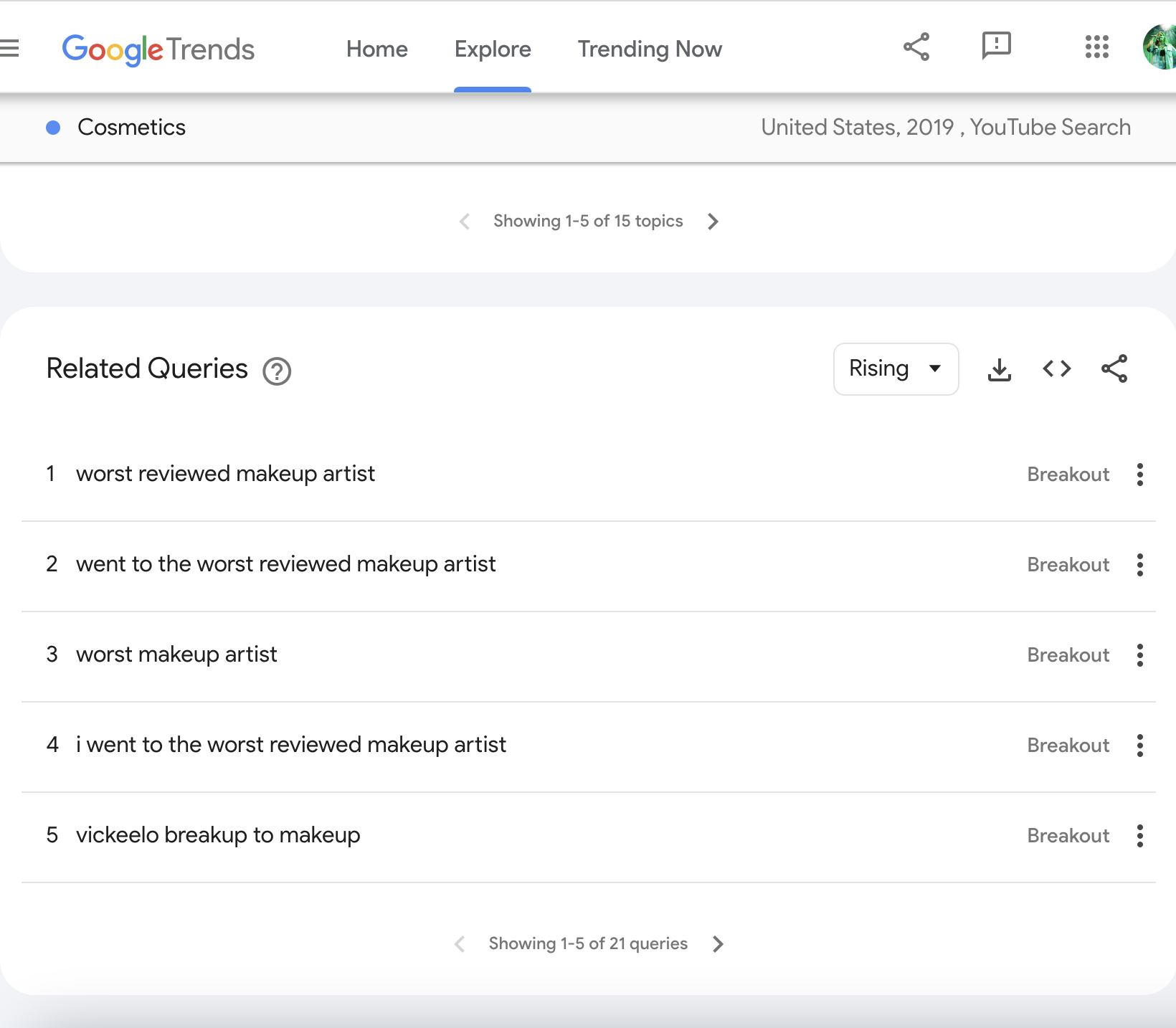
Filtering results by search type can also give us more relevant and granular data. This section will explore how to do this, and will explain the different search types available through Google Trends.
We will start with searches for cosmetics in 2019 in the US. Look at the related searches. Many of these queries are focused on specific products. Imagine instead we want to look at tutorials and challenges around makeup. We can filter our results by search type to get closer to this.
Above the line graph, next to the category selector, you will see a button labeled “Web Search”. Click on this and a menu will drop down showing different types of search. For this example, we will select “YouTube Search”.
Scroll down to look at the related search terms and topics. How have these changed between web search and YouTube search? If we are looking for data around makeup tutorials and challenges, these results may be much more relevant to our story.
Google Trends gives you five different options for search type: web search, YouTube search, image search, Google News, and Google Shopping. These are discrete datasets which do not overlap.




Detailed comparison with filters
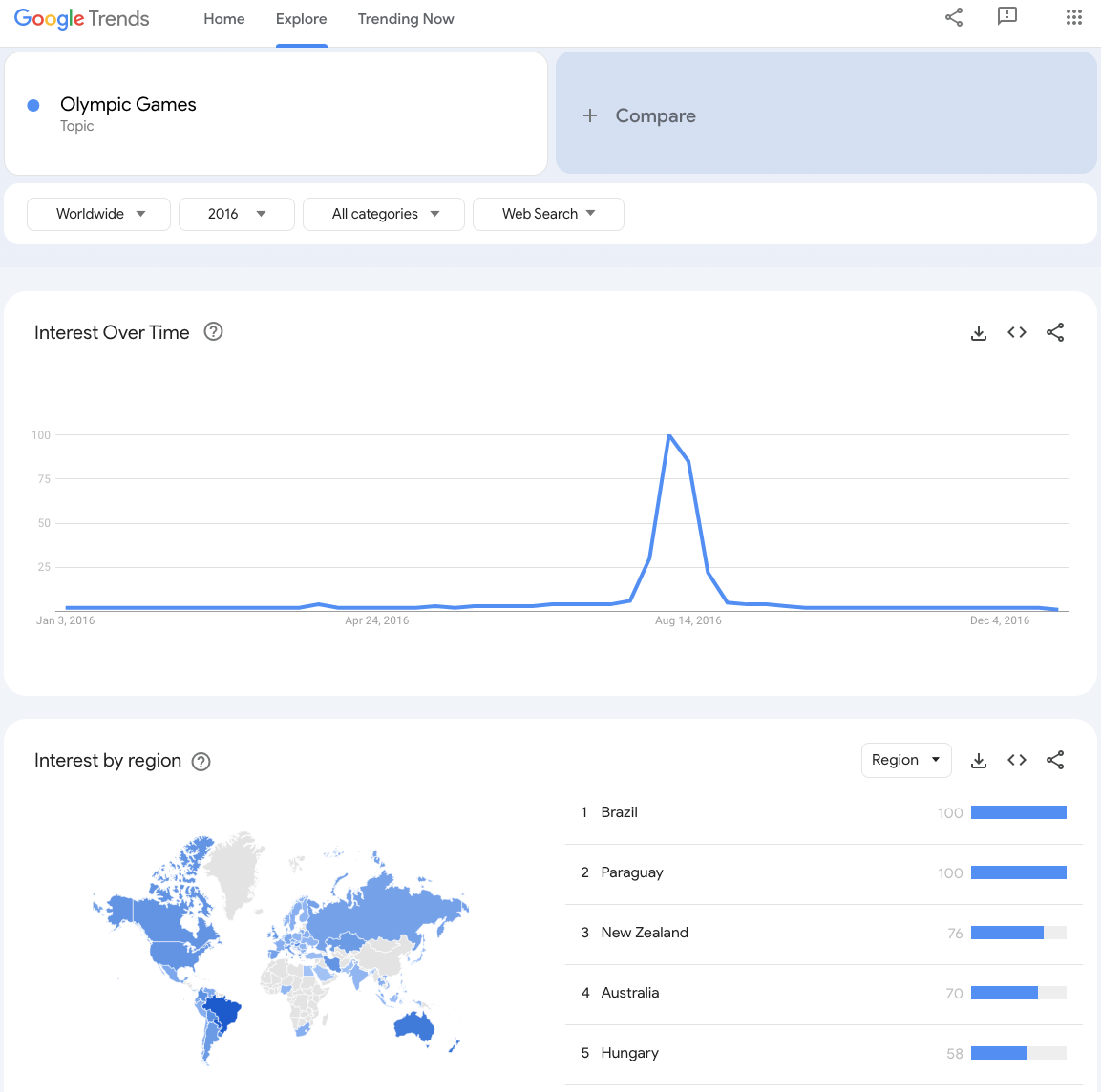
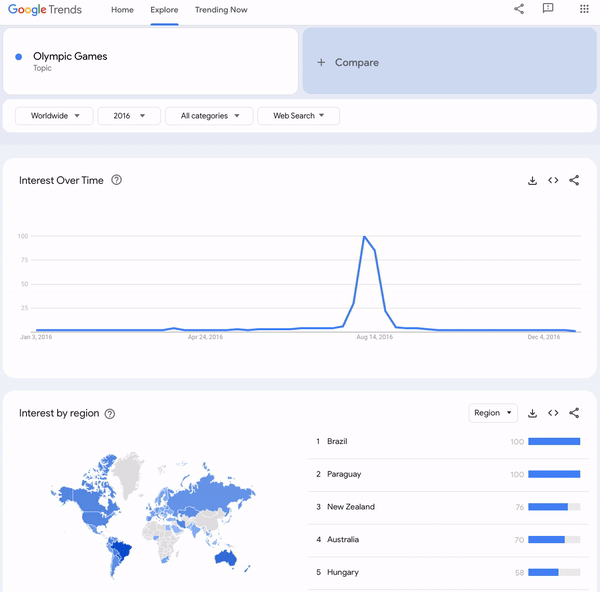
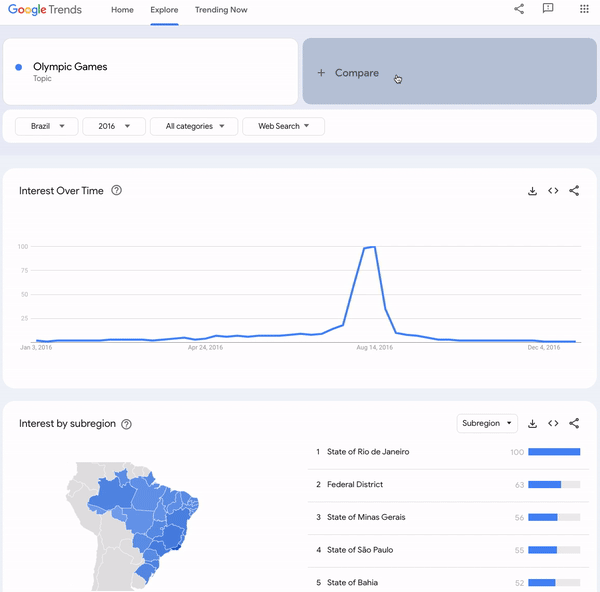
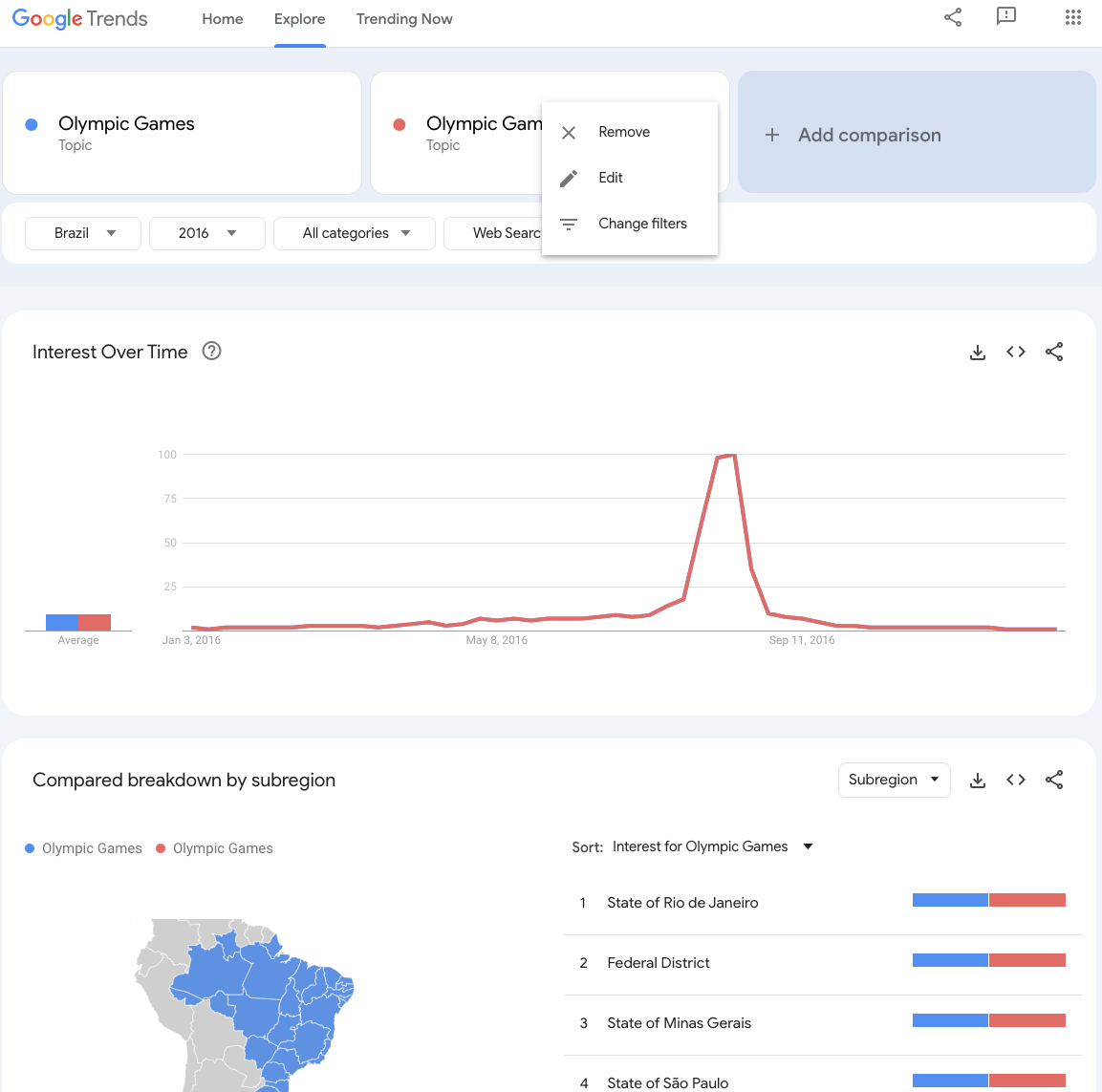
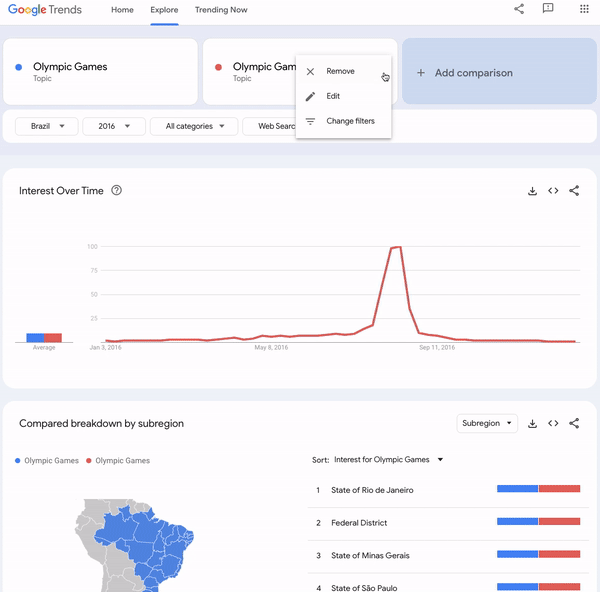
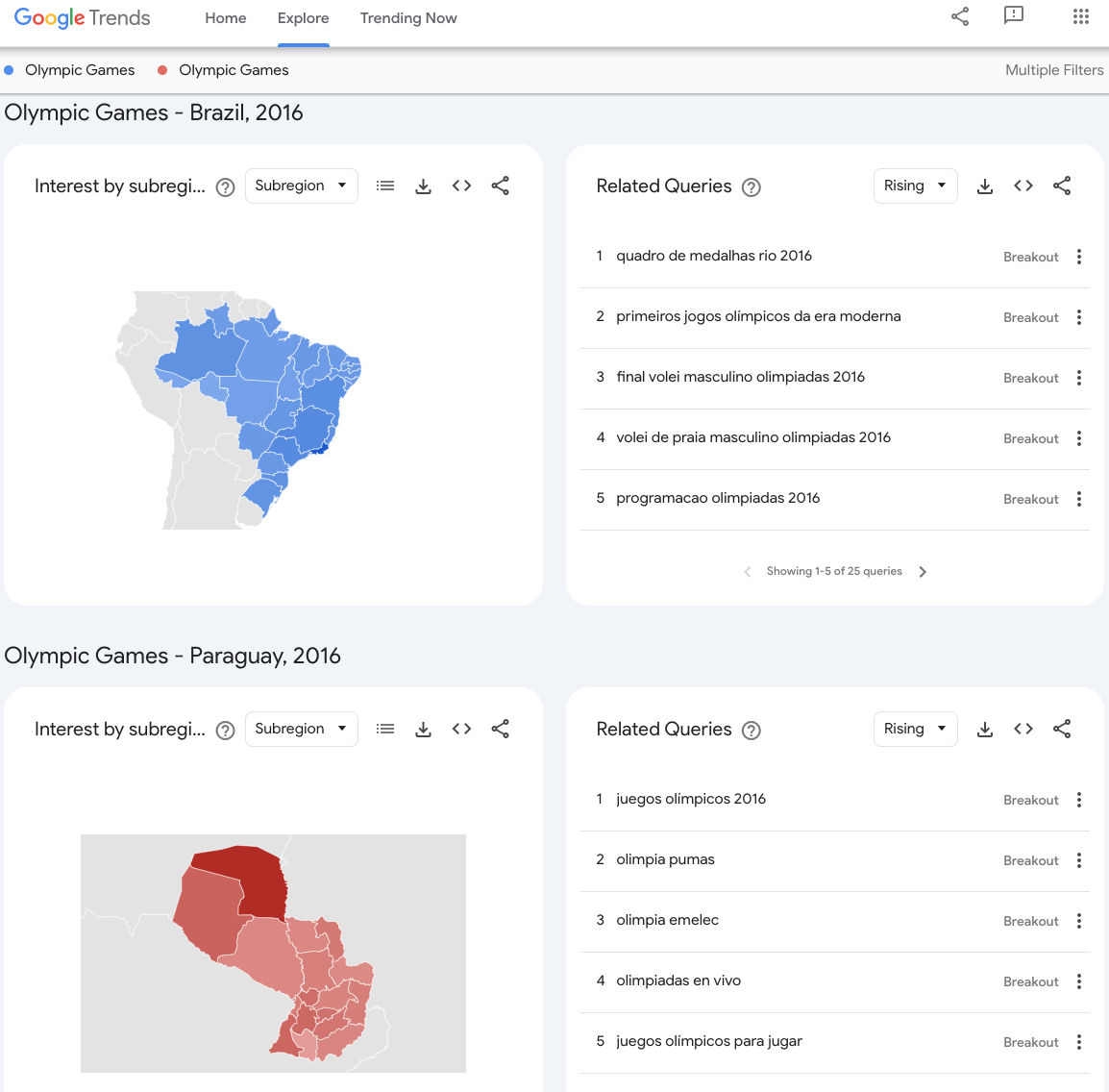
You can also filter Google Trends data to compare topics across multiple equivalent time ranges or locations. We’ll go through the steps of selecting filters and learn their use cases and limitations.
Look at worldwide search interest in the Olympic Games in 2016. Which are the top two countries searching for the Olympics? To compare these countries against each other, we could use the map. But in some cases, we will want more granular detail about how these countries search for the Olympics. We can use filters to get this.
Change the location of your search to the top country searching for the Olympics, according to your global search.
In the second field, enter the Olympic Games topic again. This might feel silly as it will simply generate the same data again, but there is a good reason for doing it.
Hover over the topic you have just entered. You will see a clickable menu button appear. When you open the menu, one of the options will be “change filters”. This is the tool we will use to compare the top two countries searching for the Olympics.
Use the menu to select the second-from-top country searching for the Olympics. You can now view a direct, detailed comparison of searches in two countries, on the same page. When using filters, it’s important to compare like-for-like: a country should be compared to another country, a week should be compared to another week. The Trends Explore tool will remind you of this.
When you compare using filters, you will see search interest by location and related queries for both of your selections separately.






Pairing NCI with Google Trends
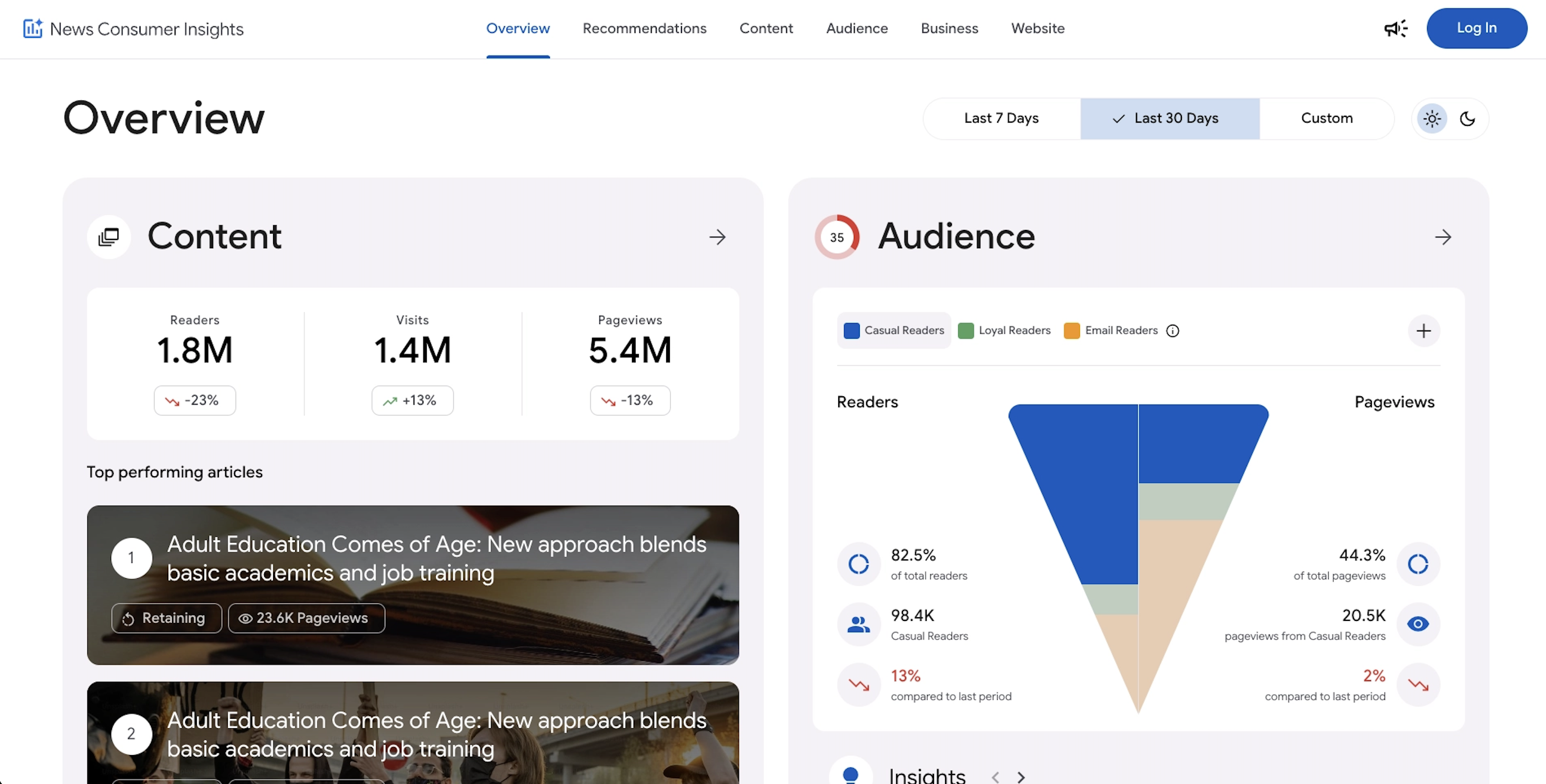
News Consumer Insights (NCI), our free of cost Google News Initiative data tool, gives you in-depth data about your audience's behavior on your news website. Google Trends shows you the overall popularity of search terms over time.
Use them together to:
- Validate your findings: See if rising engagement with a topic on your site aligns with growing search interest in that topic overall.
- Identify content opportunities: Discover trending topics that you might not be covering adequately on your site.
- Refine your content strategy: Tailor your content to match the evolving interests of your audience and the broader public.
Essentially, News Consumer Insights (NCI) tells you what's popular on your site, while Google Trends tells you what's popular in the world. Combining them gives you a powerful toolkit for understanding audience behavior and optimizing your content
Access News Consumer Insights here.

-
-
Is Machine Learning the same thing as AI?
LessonTake a bird's eye view of machine learning within the AI landscape. -
Introduction to AI for Journalists
LessonLearn about Google's approach to AI and how our products can support newsrooms.








